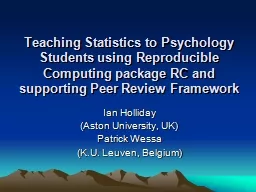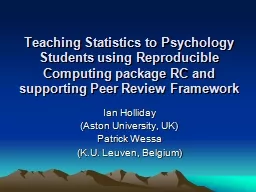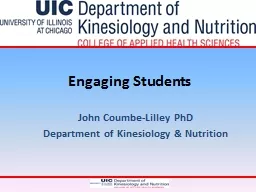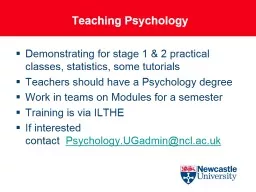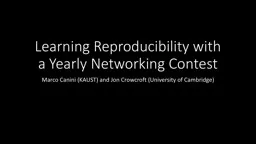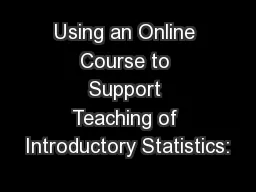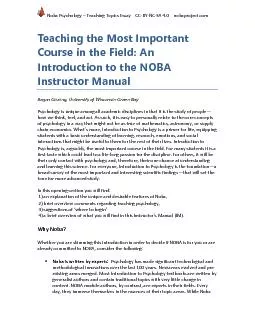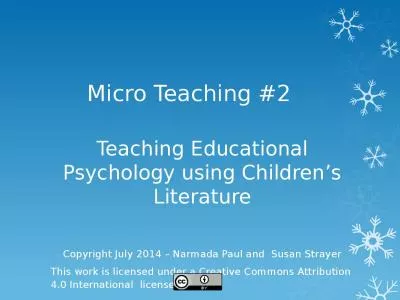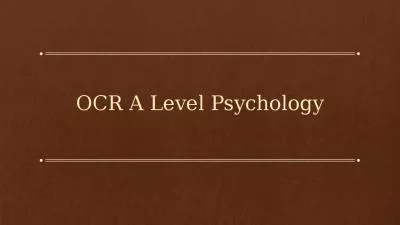PPT-Teaching Statistics to Psychology Students using Reproducible
Author : myesha-ticknor | Published Date : 2018-11-06
Computing package RC and supporting Peer Review Framework Ian Holliday Aston University UK Patrick Wessa KU Leuven Belgium Background Statistics is a requirement
Presentation Embed Code
Download Presentation
Download Presentation The PPT/PDF document "Teaching Statistics to Psychology Studen..." is the property of its rightful owner. Permission is granted to download and print the materials on this website for personal, non-commercial use only, and to display it on your personal computer provided you do not modify the materials and that you retain all copyright notices contained in the materials. By downloading content from our website, you accept the terms of this agreement.
Teaching Statistics to Psychology Students using Reproducible: Transcript
Download Rules Of Document
"Teaching Statistics to Psychology Students using Reproducible"The content belongs to its owner. You may download and print it for personal use, without modification, and keep all copyright notices. By downloading, you agree to these terms.
Related Documents

